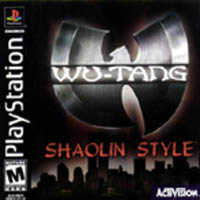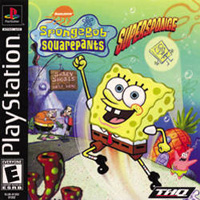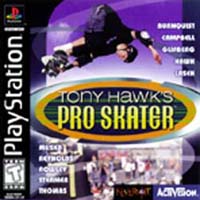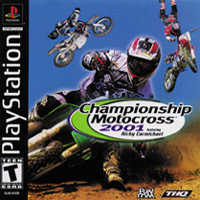 Wu-Tang: Shaolin Style
Wu-Tang: Shaolin Style
(Activision for the PlayStation)
by Shane Yeager
Just when you think that the Wu-Tang Clan has milked their affinity for kung-fu movies as much as possible, the multi-platinum rap group enlists the people at Activision to produce an arena-based fighting game starring all of the Clan’s members. Wu-Tang: Shaolin Style lets fans play ODB, Method Man, RZA and the rest as martial arts masters, each having their own preferred weapon and particular strengths and weaknesses. Players either face off against each other (in multi-player mode for up to four players) or match skills with the computer in an entertaining Story mode. In the Story mode, the goal is to rescue the sensei of the Wu-Tang Clan from his enemies, while unlocking the 36 chambers, Shaolin secrets revealed only by performing certain tasks in the individual battles. A Practice mode allows the players to hone their skills against an opponent in a non-threatening surrounding. There are ten distinct background levels, all with sub-levels that are fully 3-D rendered. The attacks will often produce a startling amount of blood, with fatality moves done in cinematic style that produces death scenes from Method Man’s brutal sledgehammer onslaught to Masta Killah’s eerie, ninja-style assassination. A simple code must be entered in order to enter the full blood-and-gore mode, so that squeamish parents can try to keep their children from seeing the decapitations, disembowelings and dismemberments. Wu-Tang: Shaolin Style is the only place to find three new Wu-Tang Clan tracks, recorded especially for the game.
The visual effects are on par with other fighting games in production, but the cinematic fatality scenes are fairly original, even if they are somewhat repetitive until you acquire the right chambers to unlock bonus death scenes. Ol’ Dirty Bastard’s figure rolls back and forth, mimicking the Shaolin drunken fighting style seen in so many of the kung-fu movies of the ’70s and ’80s, and Ghost Face Killah looks solid and imposing as he attempts his throws and slams with effortless brutality. Each Wu-Tang Clan member is given his own personality and weapon, which has a huge impact on gameplay. The members are well-balanced against each other in Versus mode play, player against player, but some Clan members will never be able to gain all the chambers in Story mode, due to their slower speed and long recovery time. How Method Man is supposed to pull off a nine-hit combination while wielding a sledgehammer is beyond me! The lack of a running function or a jump makes blocking the most important skill, as attempting to evade your opponents’ blows is often futile. This can make two-player matches deteriorate into blocking contests, with the outcome decided by who can guess better when the opponent has let down his guard. The Practice mode is particularly useful, as players can practice moves against a computer opponent programmed to sit there and take it, or keep attacking with a particular combination.
If you are a die-hard Wu-Tang Clan fan, getting the three new tracks might be enough to make you buy Wu-Tang: Shaolin Style. The game has some new ideas, and is artfully done, but is it worth your $49.95 for a fighting game? That will depend on your feelings about the Wu-Tang Clan, and whether you want to be part of the Wu World Order.



